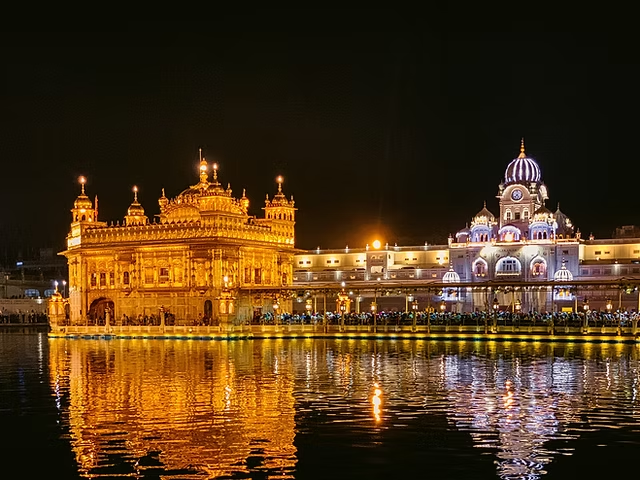Embark on a journey of profound spiritual awakening as you visit Amritsar, one of the most revered pilgrimage destinations in India. Known for its deep historical significance, Amritsar is home to the sacred Golden Temple (Harmandir Sahib), the holiest shrine of Sikhism. Beyond its spiritual charm, the city stands as a living testament to India’s rich cultural heritage, hospitality, and resilience.
Amritsar, the “Pool of Nectar,” is where devotion, history, and culture come together. The city’s name itself reflects its spiritual essence—Amrit (nectar) and Sar (pool). It is here that Guru Ram Das, the fourth Sikh Guru, founded the city and established the Golden Temple, which continues to draw millions of pilgrims and visitors from across the globe.
The Golden Temple is not just a physical structure; it is a symbol of equality, compassion, and unity. The divine glow of its golden dome, reflected in the tranquil waters of the Sarovar (holy pool), is a sight to behold. Pilgrims from all walks of life gather here to meditate, seek solace, and experience the profound sense of peace that permeates the air. The Temple is open to all, regardless of religion or nationality, and the humble practice of Langar (community kitchen) serves millions of meals daily, reflecting the Sikh philosophy of selfless service and equality.
Amritsar is also a city that carries the weight of India’s struggle for independence. The Jallianwala Bagh Memorial, a short distance from the Golden Temple, is a reminder of the 1919 massacre where hundreds of unarmed Indian civilians were killed by British forces. The memorial stands as a tribute to those who sacrificed their lives for the nation’s freedom and is a poignant part of Amritsar’s history.




At MmahadevTravels, we believe that every journey should be a memorable experience. Established with a vision to redefine the standards of travel, we offer reliable, comfortable, and affordable travel solutions tailored to meet your unique needs.